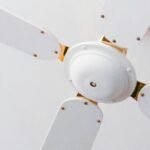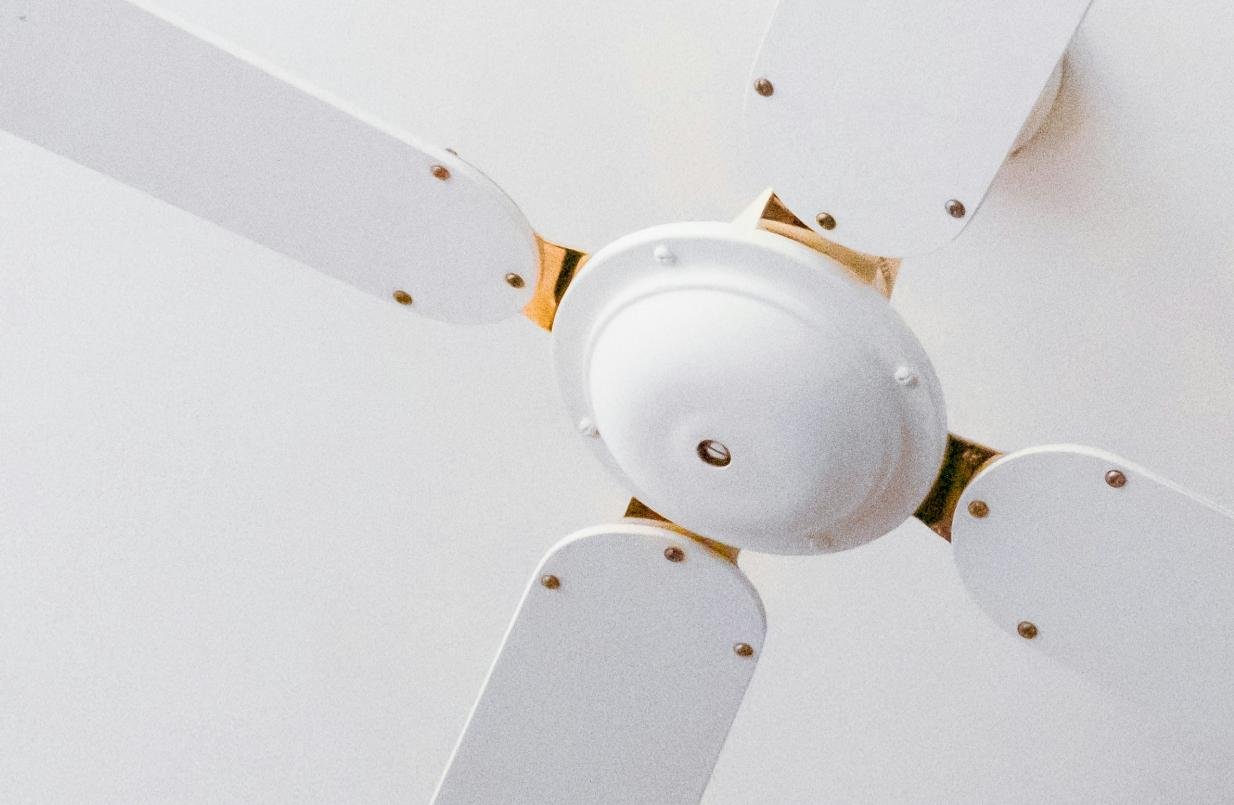Fans play a crucial role in enhancing indoor air circulation, thus providing comfort and alleviating heat during warmer months. Typically, they operate by moving air, which helps in the evaporation of sweat from the skin, creating a cooler feeling. This principle is critical in climates where air conditioning might not be readily available or desirable. Fans can be categorized into various types based on their design, functionality, and technology, with the most common varieties being ceiling fans, table fans, and traditional floor fans.
Traditional fans, often characterized by their rotating blades, effectively circulate air throughout a room. Their design allows for a straightforward mechanism: as the blades spin, they create a breeze that aids in reducing temperature and increasing comfort. Traditional fans come in various sizes and styles, which cater to specific needs and preferences. While they are generally reliable and widely available, the presence of blades poses certain safety concerns, particularly in households with children or pets.
In recent years, bladeless tower fans have emerged as an innovative alternative, gaining popularity for their sleek aesthetics and advanced technology. These fans operate by drawing air in through a base, which is then expels it through a narrow slit along the fan’s loop. This design not only eliminates the traditional blades but also results in smoother airflow and less noise. Moreover, bladeless fans often incorporate additional features such as air purification, remote controls, and customizable settings to enhance user experience.
As we delve deeper into the differences between traditional fans and bladeless tower fans, it is essential to understand their respective advantages and disadvantages to make an informed choice based on individual preferences and requirements.
Table of Contents
How Traditional Fans Work
Traditional fans are a common method of providing airflow and maintaining comfort in indoor environments. These fans typically operate on a straightforward principle: they use rotating blades to create a movement of air. When the blades spin, they displace air, resulting in a breeze that can cool an area significantly. There are two primary types of traditional fans—ceiling fans and stand fans—both of which employ this essential mechanism, but they do so in slightly different manners.
Ceiling fans are mounted on the ceiling and are designed to circulate air throughout a room. They often come with several speed settings, allowing users to customize the airflow intensity to their preference. The blades of a ceiling fan are positioned to move air downwards in warmer months, while many models can also reverse the blade direction to pull warm air up during colder months, promoting an even temperature throughout the room.
Stand fans, on the other hand, are freestanding units that typically have adjustable heights and oscillation features. The oscillation allows the fans to cover a broader area by distributing airflow more evenly across a wider space. Like ceiling fans, stand fans also come with multiple speed settings that enable the user to control the strength of the air output.
Despite their effectiveness, traditional fans have some limitations. The noise generated by the blades can be distracting for some individuals, especially when used at higher speeds. Additionally, both ceiling and stand fans do not lower the temperature of a room but rather create a wind-chill effect that makes one feel cooler. This can lead to increased energy costs if fans are left on in unoccupied rooms. Nonetheless, they continue to be popular due to their cost-effectiveness and adaptability in various settings.
Understanding Bladeless Tower Fans
Bladeless tower fans have garnered significant attention in recent years, revolutionizing the way we perceive traditional cooling methods. Unlike conventional fans, which utilize visible rotating blades to circulate air, bladeless tower fans employ a unique technology that allows them to function without any exposed blades. This innovative design not only enhances safety, especially in households with children or pets but also promotes a streamlined aesthetic that fits seamlessly into modern home decor.
The principle behind bladeless technology is known as air amplification. This process begins with air being drawn into the base of the fan, where a motor creates a strong airflow. This air is then directed through a specialized aperture in the fan’s top. As the air exits, it undergoes a rapid increase in velocity, generating a consistent and smooth stream of air. This smooth airflow reduces turbulence and delivers cooler air more evenly throughout the room, a feature that many users appreciate, especially during warm weather.
In addition to their unique cooling mechanism, bladeless tower fans are often equipped with various design features aimed at enhancing user comfort and convenience. Many models come with remote controls, timers, and adjustable speed settings, allowing for a customizable cooling experience. Additionally, the designs typically prioritize quiet operation, making them suitable for use in bedrooms and offices without causing disruptions. As consumer preferences increasingly lean towards energy-efficient and elegant solutions, the popularity of bladeless tower fans continues to rise.
In summary, understanding the technology behind bladeless tower fans reveals their capability to provide efficient and aesthetic cooling solutions. By harnessing air amplification, these fans serve as an effective alternative to traditional fans, blending performance with modern design.
Comparing Airflow and Efficiency
When evaluating the efficiency and performance of bladeless tower fans versus traditional fans, it is essential to consider several functionalities, including airflow capabilities, coverage area, and energy consumption. Traditional fans utilize blades to circulate air, creating wind through blades that chop up the air. This method results in a more concentrated airflow, which can be highly effective in smaller areas. However, this design can also lead to noise and turbulence, potentially reducing overall comfort.
Bladeless tower fans, on the other hand, employ a different technology that uses a combination of air multiplication and a motorized base to pull air in and push it out, creating a smooth airflow. This design provides an even distribution of air throughout a room, achieving a greater coverage area. The uninterrupted airflow tends not only to diminish turbulence but also allows for a quieter operation, making bladeless fans an attractive option for users who prioritize a serene environment.
In terms of energy efficiency, many bladeless tower fans are designed to consume less power compared to their traditional counterparts. Bladeless fans typically come equipped with energy-saving features such as programmable timers and variable speed settings, allowing users to customize their cooling experience without excessive energy use. While traditional fans can also be energy-efficient, the design’s inherent motor requirements can lead to higher energy consumption, particularly with larger or multi-blade models.
In summary, both fan types have their merits regarding airflow and efficiency. Traditional fans provide powerful and directed airflow, while bladeless tower fans offer quieter operation and broader air distribution. Ultimately, the choice between the two hinges on users’ preferences regarding noise levels, energy efficiency, and desired airflow characteristics, ensuring that each individual can find a solution that caters to their specific needs.
Noise Levels: Which is Quieter?
When evaluating the noise levels produced by traditional fans and bladeless tower fans, it is essential to consider the differences in blade design and overall operational mechanisms. Traditional fans, with their exposed blades, tend to create noise due to the movement of air around the blades. The rushing air sound can vary in intensity, depending on the speed settings and the fan’s construction, often resulting in a more pronounced noise level as compared to bladeless models.
On the other hand, bladeless tower fans utilize a unique design that generates airflow without visible blades. Instead, they draw air from the surrounding environment and amplify it through a narrow slit, creating a smooth and consistent stream of air. This design significantly minimizes turbulence, one of the primary sources of noise in traditional fans. As a result, users often report that bladeless tower fans operate at much lower decibel levels, offering a quieter cooling experience. Many models are engineered to emphasize silence, allowing for operation during sleep without disturbing restful moments.
User experiences further illustrate this distinction in noise levels. Many individuals who have transitioned from traditional, bladed fans to bladeless options often highlight the noticeable reduction in operational noise. Furthermore, the aesthetic appeal and lack of rotating blades in bladeless fans contribute to their popularity in quiet environments such as bedrooms and offices. In these spaces, maintaining a serene atmosphere is paramount, making the selection of a quieter fan type a crucial consideration.
In summary, when comparing the noise levels of traditional fans to bladeless tower fans, the latter clearly provides a more peaceful cooling solution. The advanced design of bladeless fans effectively reduces noise, enhancing the user experience for those seeking a tranquil environment during operation.
Safety Considerations
When comparing bladeless tower fans to traditional fans, safety considerations play a crucial role in the decision-making process for consumers. Bladeless tower fans, designed without exposed blades, present a significant advantage in terms of safety, particularly in households with children and pets. The lack of visible blades eliminates the risk of accidental injury while also providing a quieter, more streamlined operation. This design feature not only enhances safety but also encourages more versatile placement in various environments, including bedrooms or play areas.
Conversely, traditional fans, while effective in cooling larger spaces, pose certain hazards due to their exposed blades. Accidental contact can lead to cuts or injuries, especially for curious children or pets that may come into proximity with the fan during operation. Furthermore, traditional fans are also subject to tipping over, which can cause injury or damage if they fall onto someone or something. Best practices for the safe use of traditional fans include placing them out of reach of children and ensuring they are stable on their bases. It is also advisable to turn off traditional fans when not in use or during moments of supervision lapse.
Maintaining the safety of living spaces should always be a priority for any consumer, particularly in homes with young children or animals. Regular maintenance and awareness of potential hazards can mitigate risks associated with traditional fan use. Overall, while traditional fans have been a staple in cooling technology, the innovative design of bladeless units provides not just increased efficiency but also peace of mind regarding safety and injury prevention.
Aesthetic and Space Considerations
When examining the aesthetic and space considerations of bladeless tower fans versus traditional fans, it is important to recognize how these two designs cater to diverse home settings and preferences. Bladeless tower fans are often celebrated for their sleek, modern appearance. Their minimalist profile and streamlined design allow them to seamlessly integrate into contemporary home decor, making them an attractive choice for those who prioritize elegance in their living spaces. With a variety of finishes, including metallic and matte options, these fans can complement numerous color schemes and styles.
In contrast, traditional fans typically feature a more conventional design that may not blend as seamlessly into modern interiors. The visible blades and bulky bases can be less appealing to individuals who favor a curated aesthetic. However, traditional fan designs often evoke a sense of nostalgia and can harmonize well with vintage or rustic decor themes. Understanding personal style is crucial when selecting a fan type, as both options have their unique charm.
Space considerations also play a pivotal role in choosing between these fan types. Bladeless tower fans tend to be more compact, making them ideal for smaller living spaces. Their vertical orientation allows for efficient air circulation without occupying much floor area. This makes them particularly suitable for apartments or small rooms where maximizing space is key. Conversely, traditional fans tend to require more space due to their wider bases and horizontal configurations, which may not be feasible in constrained environments.
Ultimately, the decision between bladeless tower fans and traditional fans will depend on personal preferences regarding aesthetics and available space. Homeowners should carefully evaluate how each option aligns with their style while also considering the practicality of placement in their chosen environments.
Cost Analysis: Bladeless vs. Traditional
When evaluating the financial implications of purchasing fans, it is essential to consider both the initial acquisition costs and the ongoing operational expenses. Bladeless tower fans generally present a higher upfront investment compared to traditional fans. On average, a reputable bladeless model can range from $100 to $500, depending on features and brand. In contrast, traditional fans, including pedestal and oscillating models, often range from $20 to $150, making them a more budget-friendly option for consumers seeking immediate cost savings.
Beyond the purchase price, maintenance costs play a significant role in understanding the long-term financial commitments associated with either option. Bladeless fans typically require less upkeep than traditional fans due to their design, which often minimizes dust accumulation and eliminates the need for blade cleaning. While both fan types require periodic cleaning to maintain optimal performance, the more straightforward construction of bladeless models can reduce incremental maintenance time and costs over the years.
Another critical aspect to consider is the energy efficiency of these fans. Bladeless tower fans are designed with advanced technologies that contribute to lower power consumption, often making them more energy-efficient over time. For instance, bladeless fans usually draw less electricity while providing the same or greater airflow compared to their traditional counterparts. Consequently, users can anticipate reduced energy bills, particularly in regions where cooling is required over extensive periods. Traditional fans, while generally cheaper in upfront costs, can lead to higher long-term operating expenses due to their inefficiency.
Ultimately, the decision between bladeless tower fans and traditional fans entails weighing initial costs against long-term expenses. Consumers are advised to assess their specific needs and budgets to make an informed choice that aligns with their financial situations and cooling requirements.
Conclusion: Which Fan is Right for You?
As you consider your options between bladeless tower fans and traditional fans, it is essential to reflect on your specific needs and preferences. Each fan type offers unique advantages that cater to different requirements. For instance, if safety is a primary concern, especially in households with children or pets, the bladeless design significantly reduces the risk of accidents that can occur with exposed blades. Their smooth operation and contemporary aesthetic also make them appealing for modern living spaces.
On the other hand, traditional fans often come at a lower price point and offer a proven method of cooling that has stood the test of time. They generally provide a stronger airflow and greater flexibility in terms of directional control, making them a practical choice for those who prioritize performance and adjustability. If you are looking for an economical option and do not mind the aesthetic of a classic design, traditional fans may suit your needs better.
When evaluating your situation, consider aspects such as room size, desired airflow, and noise levels. If noise is an important factor for you, the generally quieter operation of bladeless fans could offer the tranquility you seek, while traditional fans may present a bit more noise due to their motorized components. Furthermore, think about the overall aesthetics of your environment; a sleek bladeless fan can complement modern décor, while traditional fans can fit well in more classic settings.
Ultimately, the decision between a bladeless tower fan and a traditional fan is a personal one, influenced by a combination of comfort, safety features, design preferences, and budget constraints. By carefully weighing these factors, you can find the fan that best meets your requirements and enhances your living space.






